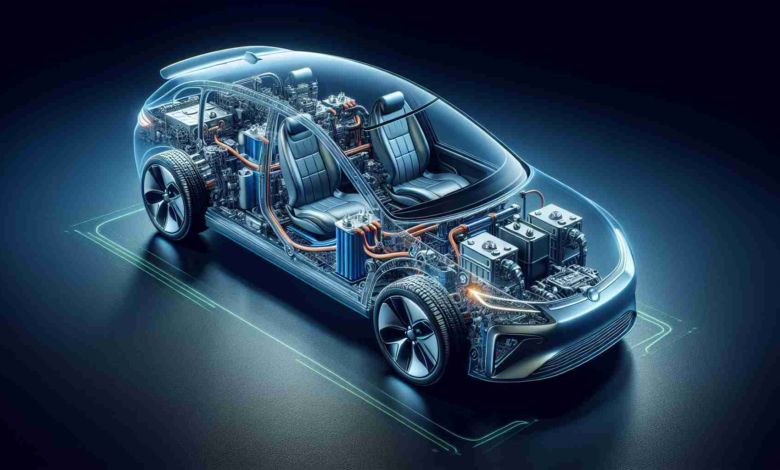The Emergence of Solid-State Batteries

Summary: Solid-state batteries are making waves in the electric vehicle (EV) sector with their potential to enhance safety, efficiency, and driving range. They provide significant improvements over conventional lithium-ion batteries and are expected to accelerate market growth despite the challenges of production scale-up and raw material sourcing.
Solid-state batteries, utilizing solid electrodes and a solid electrolyte, offer a transformative shift in electric vehicle technology. Their superior safety profile, due to the absence of flammable liquid electrolytes, addresses one of the most pressing consumer concerns regarding EVs, potentially increasing their appeal in the market.
What sets these batteries apart is their higher energy density, enabling EVs to travel longer distances on a single charge. Coupled with the prospects of substantially reduced charging times, solid-state batteries could change the public perception of EVs as impractical due to range anxiety and charging inconvenience.
The burgeoning solid-state battery market, anticipated to soar to remarkable financial heights in the upcoming years, could be a significant driver behind an eco-friendly revolution in the auto industry. Market analyses forecast a steep climb in market value, led by automotive applications.
Yet, several hurdles must be conquered to realize this potential fully. Scaling production to meet the demand, ensuring the availability of critical materials like lithium, and revamping charging infrastructure are paramount challenges that call for collective industry efforts and strategic research initiatives. Insightful market trend predictions by organizations like BloombergNEF help pave the way for these advancements.
Tesla, among other industry giants, and entities such as the International Energy Agency, contribute valuable expertise to this evolutionary march. The transition to solid-state batteries is not merely technological but a reflection of a commitment to sustainable innovation. It marks a significant step toward eco-friendly transportation, with far-reaching implications that extend to grid storage, consumer electronics, and even the aerospace industry. The ultimate success of solid-state batteries hinges on overcoming the costs and production barriers, a goal that could redefine the future of mobility and energy consumption.
Industry Overview
Solid-state batteries represent a cutting-edge advance in energy storage technology, particularly within the automotive sector. The global shift towards electric vehicles (EVs), driven by a collective effort to reduce carbon emissions and combat climate change, has placed a spotlight on solid-state battery technology as a key enabler for this transition. Given their advantages compared to traditional lithium-ion batteries, including higher energy density, enhanced safety, and potential for faster charging, solid-state batteries are poised to disrupt the current market dynamics and set new standards for electric mobility.
Market Forecasts
Industry analysts project a significant growth trajectory for the solid-state battery market. As automakers race to extend the driving range and safety of their EVs, the adoption of solid-state technology is expected to accelerate. Research reports from credible market analysis firms project exponential growth in the solid-state battery industry over the next decade. They predict a multi-billion-dollar market valuation, with the automotive sector being the main driver of demand.
Challenges
Amidst this projected growth, the industry faces tangible hurdles. The scale-up of manufacturing processes remains a key challenge, with most solid-state batteries still in development or early production phases. Achieving economies of scale will be critical for these batteries to be commercially viable alternatives to established lithium-ion batteries. Moreover, securing a sustainable and reliable supply of raw materials, such as lithium and other rare earth elements, is crucial for industry sustainability, as demand for these materials is expected to increase sharply.
Ensuring a suitable charging infrastructure is also a vital consideration. The promise of fast-charging solid-state batteries will require substantial investments in charging station technology and widespread network deployment. The adoption of these batteries on a large scale may necessitate updates to existing electricity grids to cope with increased energy demands.
To keep up with the industry trends and market forecasts, organizations such as BloombergNEF (BloombergNEF) offer research and analysis on these progressing technologies and market developments.
Impact Beyond EVs
The implications of solid-state battery technology extend far beyond electric vehicles. The potential for enhanced energy storage solutions is anticipated to benefit grid storage systems, enabling better integration of renewable energy sources. In consumer electronics, the advent of more compact, safe, and long-lasting batteries could revolutionize the market for portable devices. Furthermore, the aerospace industry could also reap significant benefits in terms of safety and performance, with applications ranging from commercial aviation to space exploration.
In conclusion, the evolution of solid-state batteries represents a monumental leap forward for the future of energy storage and electric mobility. The capacity to overcome current constraints and the continuing global pursuit of sustainability are guiding the industry towards a greener, more efficient, and possibly more electrified future. As the technology matures and overcomes its production and infrastructure challenges, it could play a pivotal role in shaping a new era for transportation, and beyond.

Leokadia Głogulska is an emerging figure in the field of environmental technology, known for her groundbreaking work in developing sustainable urban infrastructure solutions. Her research focuses on integrating green technologies in urban planning, aiming to reduce environmental impact while enhancing livability in cities. Głogulska’s innovative approaches to renewable energy usage, waste management, and eco-friendly transportation systems have garnered attention for their practicality and effectiveness. Her contributions are increasingly influential in shaping policies and practices towards more sustainable and resilient urban environments.



